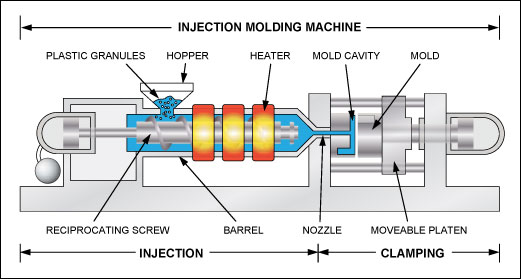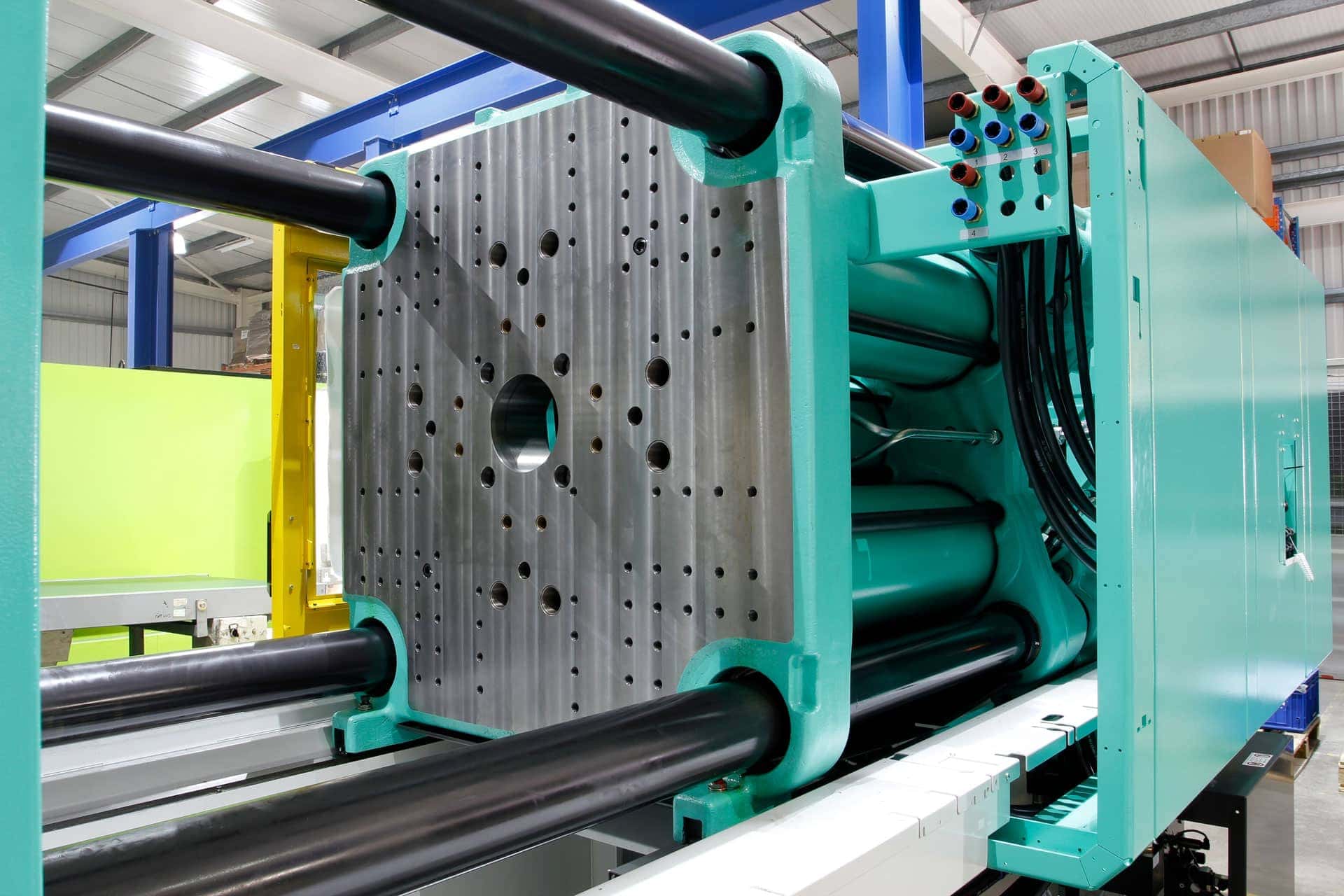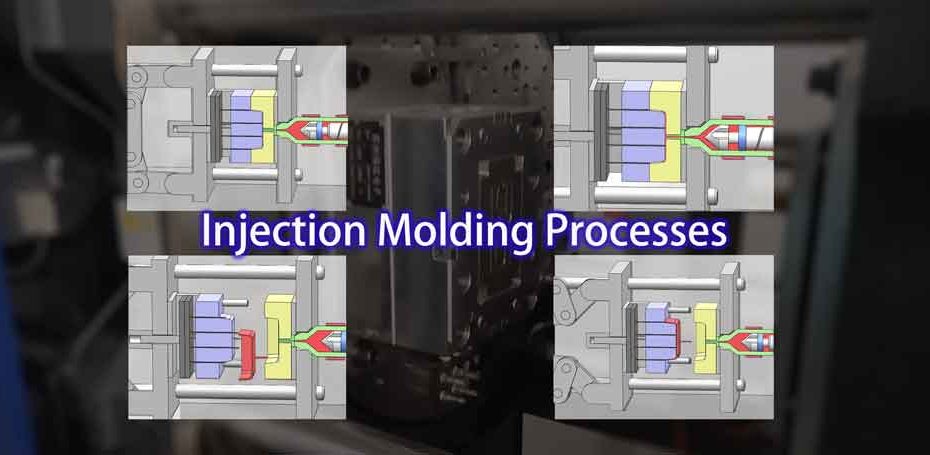Exactly How Plastic Injection Molding Drives Effectiveness in Mass Production
Exactly How Plastic Injection Molding Drives Effectiveness in Mass Production
Blog Article
Recognizing the Essentials of Plastic Injection Molding Processes
Plastic injection molding serves as a foundation of contemporary production, providing a systematic technique to creating intricate components with accuracy. Checking out these important elements might reveal exactly how even small adjustments can lead to substantial improvements in production results, increasing concerns concerning the potential for advancement in this established procedure.
What Is Plastic Shot Molding?
Plastic injection molding is an extensively used production process that transforms polycarbonate and thermosetting materials into exact and complex forms. This method is preferred for its ability to create high quantities of identical parts with phenomenal accuracy, making it an essential method in various markets, including automotive, durable goods, and clinical tools.
The process includes thawing the picked plastic product and injecting it right into a mold and mildew under high stress. The mold, designed to the specifications of the wanted component, allows the liquified plastic to take shape as it solidifies and cools. As soon as the product has actually hardened, the mold is opened up, and the finished element is expelled.
Plastic shot molding uses a number of advantages, including lowered waste, uniformity in manufacturing, and the ability to integrate detailed layouts that may be challenging with other making methods. In addition, it supports a broad series of materials, each providing special buildings that can be customized for certain applications. As sectors remain to introduce, plastic injection molding continues to be at the center, allowing the advancement of advanced products that meet progressing consumer demands.
The Injection Molding Process
The shot molding process is a sophisticated method that involves a number of crucial stages to generate high-quality plastic elements. At first, plastic pellets are fed into a heated barrel where they are melted into a viscous liquid. This molten plastic is then infused under high pressure into a precision-engineered mold and mildew, which shapes the material into the preferred kind.
As soon as the mold and mildew is filled, the plastic is enabled to cool and strengthen, taking the form of the mold dental caries. Cooling time is essential, as it influences the cycle time and the final residential properties of the molded component. After enough cooling, the mold and mildew opens, and the completed component is ejected using ejector pins.

Products Made Use Of in Injection Molding
Various materials can be made use of in the injection molding procedure, each offering distinct homes that satisfy details applications. One of the most frequently used materials consist of thermoplastics, thermosetting plastics, and elastomers.

Thermosetting plastics, like epoxy and phenolic materials, go through a chemical modification during the treating process, causing a rigid, stringent structure. These products are perfect for applications requiring high warmth resistance and architectural stability, usually made use of in automobile parts and electrical insulators.
Elastomers, including silicone and rubber-based products, provide versatility and strength. Their one-of-a-kind homes make them ideal for applications that demand elasticity, such as seals and gaskets.
Additionally, specialty materials like bio-based plastics and composites are getting grip for their ecological benefits and improved performance attributes, expanding the extent of injection molding applications in various sectors. Understanding the residential or commercial properties of these products is crucial for picking the appropriate kind for specific jobs.
Benefits of Injection Molding
Shot molding stands apart as an extremely reliable manufacturing process that offers many benefits for generating intricate get rid of precision. One of one of the most substantial benefits is the capacity to produce complex designs that would be challenging or impossible to achieve with other approaches (Plastic Injection Molding). The process permits tight tolerances and detailed features, making certain top notch components
Additionally, shot molding is understood for its fast manufacturing capabilities, making it a suitable selection for high-volume production. As soon as the mold and mildew is created, parts can be generated swiftly, reducing lead times and enhancing total efficiency. This performance not just lowers production prices yet additionally supplies an affordable side in the market.
The adaptability of products utilized in shot molding better boosts its appeal. click here for more A variety of thermoplastics and thermosetting polymers can be employed, permitting suppliers to pick products that best satisfy their details needs, including versatility, heat, and toughness resistance.
Furthermore, the procedure reduces waste, as excess material can commonly be recycled and recycled. This sustainability aspect adds to a lowered ecological effect, making shot molding an accountable production choice. Generally, the advantages of injection molding make it a preferred technique for lots of industries.
Variables Impacting Product Quality
While various aspects can influence product quality in injection molding, understanding these components is important for achieving optimum results. Trick aspects include material option, processing parameters, and mold style.
Material choice plays a crucial role, as different polymers display unique homes that impact flowability, strength, and thermal stability. Poor product option can lead to defects such as bending or incomplete dental filling.
Handling parameters, including pressure, cycle, and temperature time, must be thoroughly regulated. Variants in these settings can cause variances partly measurements and surface area finish. website link Exceedingly high temperatures may trigger deterioration of the polymer, while inadequate pressure can result in short shots.
Mold design is just as essential, as it determines the circulation of the molten plastic and the cooling procedure. Inadequately created mold and mildews might result in uneven cooling rates, resulting in recurring tensions and dimensional errors.

Final Thought
In conclusion, plastic injection molding functions as a crucial hop over to here manufacturing process that enables the efficient manufacturing of top quality parts. Proficiency of the shot molding procedure, including the understanding of materials and the influence of different aspects on product top quality, is necessary for achieving optimal results. The benefits of this approach, such as cost-effectiveness and design flexibility, further underscore its significance throughout numerous sectors, solidifying its condition as a favored option for high-volume manufacturing.
Plastic injection molding serves as a cornerstone of modern manufacturing, supplying a methodical method to producing complicated parts with accuracy.Plastic injection molding supplies several benefits, including lowered waste, uniformity in manufacturing, and the ability to include complex styles that may be testing with various other producing approaches (Plastic Injection Molding). As markets proceed to introduce, plastic shot molding stays at the forefront, allowing the advancement of advanced products that satisfy advancing customer demands
The shot molding process is a sophisticated strategy that includes several crucial stages to generate top notch plastic elements.In conclusion, plastic shot molding offers as a critical manufacturing procedure that enables the reliable manufacturing of premium components.
Report this page